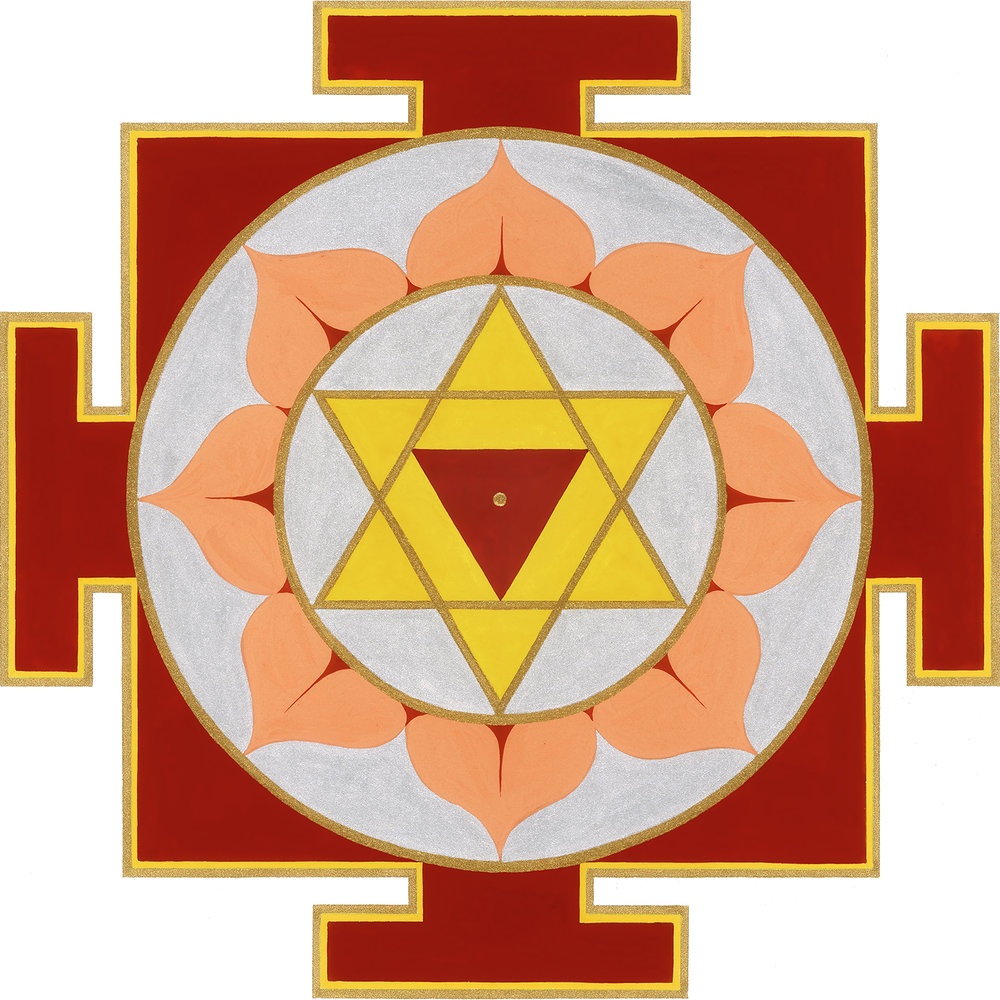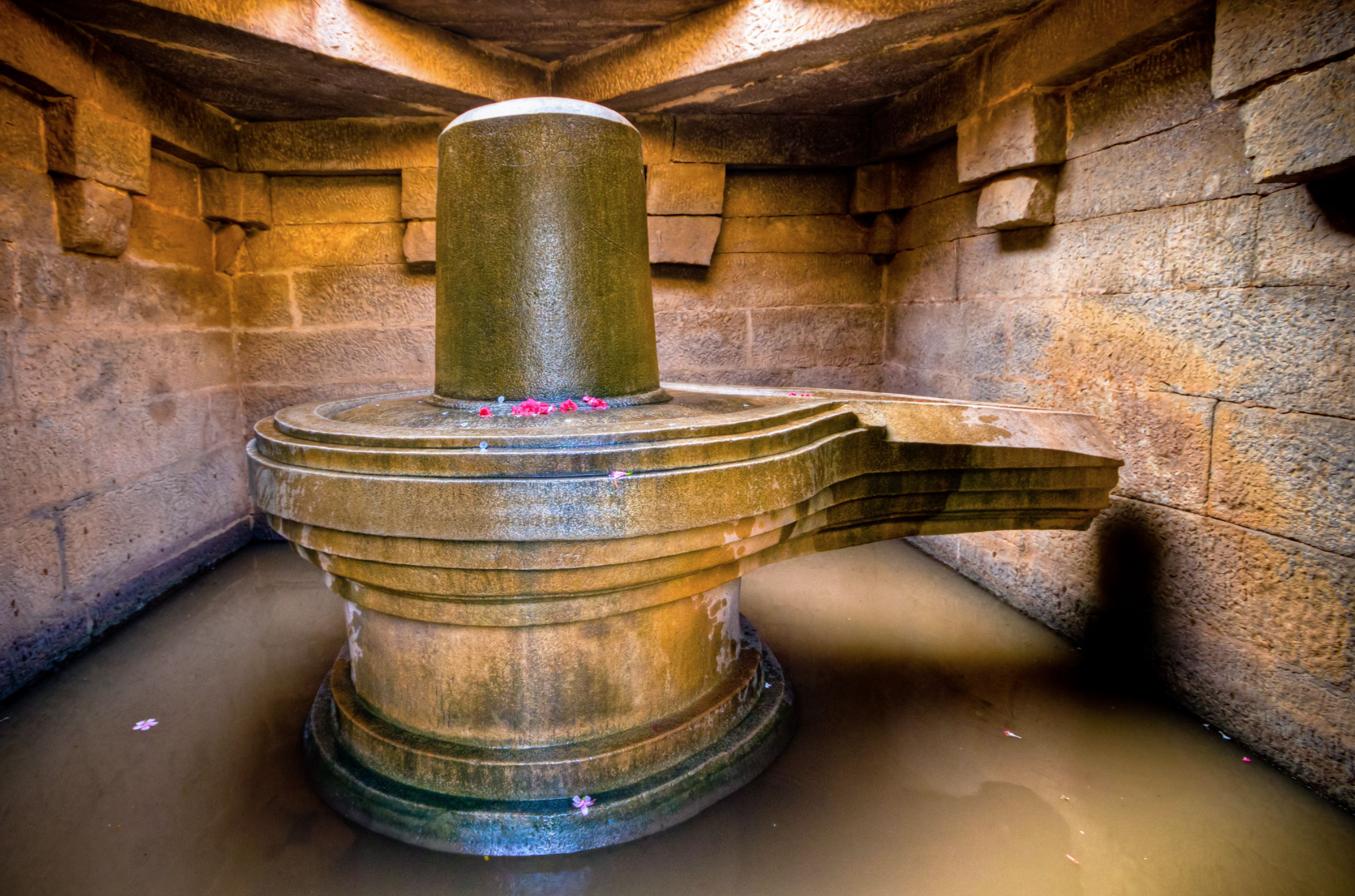- Edited

Image source: Sarah Tomlinson
The principle maṇḍala of a major Tantric tradition is a sacred cosmogram.1 There the divine beings of that tradition which populate the universe and the metaphysical and bio-physical principles to which they correspond are represented, worshipped and ultimately experienced directly in the maṇḍala, in the body into which it is projected and the macrocosm it represents. The successive enclosures — geometric figures, lotuses and the like — around the centre of the maṇḍala represent the stages, as we move out from the centre, of the progressive manifestation of the universe as it is conceived by the tradition to which the maṇḍala belongs. They may be drawn on the ground, cloth, metal or other material. Occasionally we find three-dimensional maṇḍalas. But although they are more accurate representations, they are necessarily, like the others, static. The actual contents and configuration of the parts of the main maṇḍala of each tradition vary, but even so all Tantric traditions agree that the reality represented by the maṇḍala is dynamic and multi-dimensional, although some schools may maintain that this reality is not ultimate. Moreover, the centre of the maṇḍala is invariably understood to represent the source and ultimate end of the universe symbolically deployed within it. The universe, either actually or apparently, according to the varying metaphysical perspective of any given tradition, expands out from a non-dimensional point that lies at the centre of it. When it has expanded out to the full degree of its complete manifestation, it then retraces the same stages in reverse, contracting progressively back into the centre.
Again, all major Tantric traditions agree that their maṇḍala is also an outer representation of the inner maṇḍala which, along with the beings, metaphysical principles, forces, mantras and bio-physical energies, especially those associated with the vital breath, are experienced and manipulated through Yoga and ritual in the subtle body of the initiate. Thus the maṇḍala in this perspective is not only a diagram of the universe, it is also a map of the path the initiate treads through all the spheres of manifestation, sacralized with powerful theophanies. In this perspective, the centre of the maṇḍala is not only the location, as it were, of the ultimate core reality which is the ground, source and end of all things, it is also the liberating goal of the initiate's inner, spiritual journey.

A gigantic Śiva Liṅgam at Badavilinga Temple, Hampi, Karnataka. Amith Nag Photography/Getty Images
The Liṅga (dot) projected into the triangle of the maṇḍala represents the focal point of the fundamental principles that underlie and sustain the liberating and empowering insight into the ultimate nature of reality. The Triangle emerges from the Point and collapses back into it. The nature and dynamics of this relationship is complex, as is the reality it represents. They are not only the Liṅga, which normally represents the male polarity, they are equally the Yoni, the female one and both together. In other words this 'Yoniliṅga' is the Yoni which is the Liṅga, the Liṅga which is the Yoni as well as the composite Yoni and Liṅga.
––––––––
1 - All major maṇḍalas are cosmograms. However, the universe they represent may be understood to be on the model, for example, of a house, temple, monastery, cremation ground or other sacred site, city, country, or universal empire. Apart from the beings who inhabit them, they may contain sacred sites, rivers, mountains, and other geographical features as well as trees and vegetation of all sorts, houses, temples and the rest that they may also represent individually.
Source: Mark S.G. Dyczkowski "Manthanabhairavatantram, Kumarikakhandah 12 Vol. The Section Concerning the Virgin Goddess"

